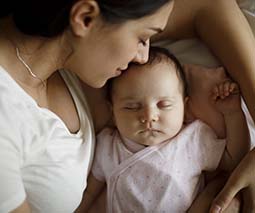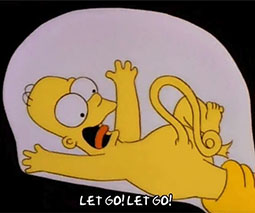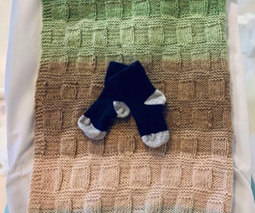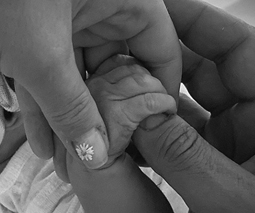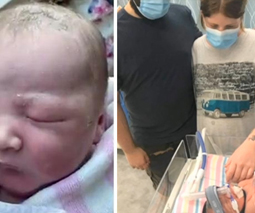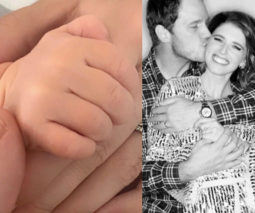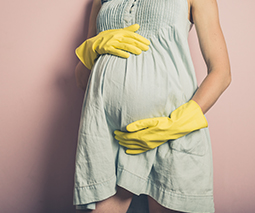What is better during childbirth – an episiotomy or natural tearing?

Neither sound very inviting but when going through childbirth, is it preferable to have an episiotomy or tear naturally?
David Addenbrooke is an obstetrician and the co-author of Nine Months, the Essential Australian Guide to Pregnancy. He explains the difference between the two.
Why do women tear?
“Tearing is a natural thing and statistically speaking, first time, probably two out of three women will have some degree of tear,” says David. “So, to some degree, its a natural rite of passage of the process, but there are certain things we can do to try and prevent it or watch it and make sure that it’s not bad.”
The causes of tearing are a little more complicated than simply birthing a big baby. “I’ve seen people have quite bad tears with a tiny five-pound baby. And I’ve seen people push out an eleven-pound baby without a scratch,” says David.
“I think the size of the passenger compared to the passage is very relevant, so sometimes when you get a small-framed woman with a bigger belly, that could increase the likelihood [of tearing]. But I think there are also genetic factors with collagen and some issues around the way that women push in the environment of birth.”
Listen to David Addenbrooke on Feed Play Love:
What exactly is an episiotomy?
An episiotomy is a procedure that doctors need to do during childbirth to make extra room for the delivery. “It’s a medical intervention where we make a cut to open up the opening of the vagina a bit wider,’’ says David. “It’s always done with some degree of anaesthetic. Unless it’s an outright emergency, there’s usually always a chance of putting a bit of local anaesthetic or making it numb. It’s done with a pair of scissors, and it’s usually very quick and over before you know it.”
While it’s sometimes a necessary process, David says there is no such thing as a routine episiotomy. “For me, the best outcome is if the woman doesn’t tear,” he says. “I get to go home quicker; she’s happy, and there are no stitches, so an episiotomy is not something we do just for fun.”
When is an episiotomy necessary?
“In general, if we’re considering using forceps or a vacuum, we should also be considering the need for an episiotomy,” says David. “The other times when it’s recommended is if there’s foetal distress. So if we can see the baby is really close, and you know with a bit of time it might come over 10 or 15 minutes, but the heart rate drops and there’s a need for sudden concern, an episiotomy will get that baby out a bit quicker.
Which way to go?
David explains that there are moments during childbirth where an obstetrician has to make a judgement call. “You see women pushing and pushing. You can see a large area of the head pushing, and you know that it’s inevitable: you’re waiting for them to tear around the vagina,” he says. “If that’s happening gradually and slowly and it’s likely to be a nice neat tear in the middle, then a natural tear will always be more comfortable and heal better.”
However, there are also times when a natural tear can go very wrong. “A natural tear may go in a hundred different directions. It may go upwards and tear through the clitoris, or it may go downwards and tear through the anal muscles and those are things which we really don’t want,” says David. “They’re going to be much more tricky to put together, more uncomfortable and have more long term effects.”
For the obstetrician, it can be a case of weighing up one gamble against the other. “When we do an episiotomy, we know we definitely need to put stitches in, and there’s going to be a degree of discomfort. But it may be better than what a natural tear would eventuate in certain circumstances,” says David.
Second time around
A mother might be concerned that she will tear along her episiotomy line when she next gives birth; however, this isn’t necessarily so. “Sometimes you see a tear go along the episiotomy line but not always,” says David. “I think whether someone tears naturally or they had an episiotomy with their first baby, the second time around, they’re less likely to tear. And the more babies you have, the lower the likelihood of a tear becomes.”
Can you prevent tearing?
No one can guarantee a woman that she absolutely will not tear. But there’s evidence of interventions which may reduce the risks, such as perineal massage. “Leading up to the birth, try to gently sort of stretch and push down on those muscles and encourage them to soften. I tell women it’s not that you’re trying to stretch out the collagen to make the opening bigger. What you’re trying to do is encourage that muscle of the perineum to be a little bit more flexible,” says David. “And then during the birth, there are some things that the midwife and the obstetrician can do to help encourage a reduced risk of tearing as well.”

